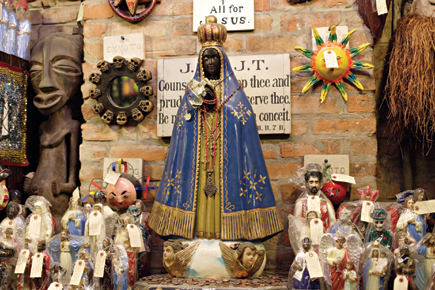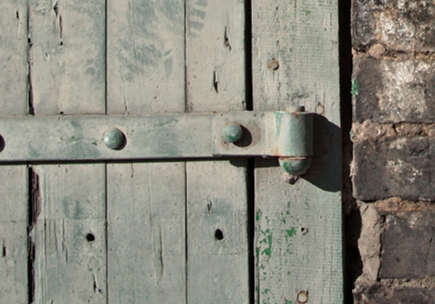Canon’s EOS-1Ds Mark II
The Digital SLR Big Shot Page 2
 |
|
 |
|
 |
|
|
· Bracketing and Compensation: There is in Display,
or playback, a histogram read-out with out of range warning displays, but this
might be unnecessary if you're into bracketing and editing. The camera
allows you to bracket exposure (as usual, with shutter speed brackets in AV
mode and aperture brackets in TV mode), ISO speed, flash output (with E-TTL
II or FEB-compatible flash units), and the aforementioned white balance bracketing.
You can bracket in continuous or single drive mode.
· Custom and Personal Functions: There are numerous ways
you can customize the camera to your way of working. I like #4, which allows
me to link or unlink the AE lock button with the AF lock; #9 for autoexposure
bracketing sequence; and #10, which dims or lights the AF point or points (I
like `em lit). One very interesting Custom Function is #15, which if I
read it right allows those with EX-series Speedlites lacking a second curtain
sync feature to gain one.
Along with Custom Functions comes Personal Functions, which can be used to register
and recall a group of Custom Functions, to restrict the number of shots made
during continuous drive mode or to loop bracketing sequences during continuous
shooting, which means you can follow subjects around through all sorts of light
and keep the bracket sequence going and going.
All in all, access to and control over critical and even nuanced shooting controls
on this camera is superb. Handling is a pleasure, although it must be mentioned
that this camera is a bit on the heavy side. Heard of tennis elbow? Work with
this camera for a day and you'll know its weight, especially if you're
used to working with a polycarbonate or equally lightweight camera. But I guess
that's the price you pay for a pro-level body.
 |
|
 |
|
|
Power is supplied by an integral (but slip out) Ni-MH pack, which takes about
two hours to go from dead to full charge. According to Canon, the fully charged
pack delivers about 1200 shots, but I never ran out throughout day to night
shooting, with some excessive chimping breaks in between. But be forewarned
that the battery charger, with two connectors should you want to charge two
packs simultaneously, is almost as big as the camera, which makes packing the
charger along fairly cumbersome.
So, all these functions are great, but how's the image quality? I can
say without reservation that the EOS-1Ds Mark II produced the best quality digital
image files I have encountered from a digital SLR. This shouldn't be surprising,
due to the large files and full-size sensor (thus large pixels). But as we have
learned, pixel count isn't all there is to digital image quality. There's
color repro, sharpness, and that elusive quality one can describe as smooth
tonality, much of which is delivered by the digital processing system in the
camera. The nuance of colors captured, the size of files and subsequent print
sizes available, and the tonal range the sensor seems to deliver is, in one
word, amazing.
I did shoot most of the images in raw, as mentioned, and by now we all know
that raw is the deferment of image processing until later, which means that
you do get to spend a good deal of screen time to get these images where you
want them to go. I worked with the Canon Professional Raw converter software
and after a while found that I could wring just about anything I wanted from
the images. This was especially true when it came to portraits, which I found
benefited from either setting the Portrait color matrix when I shot or adding
a bit of warmth (my taste) later using the Canon Raw software. After playing
with nuanced white balance and the various other settings I appreciated what
the CR2 raw files contained and suggest that it's the best way to go with
this, and other high-end pro digital cameras. But you do get to spend some extra
time that you might have had a lab handle in the past. But such is the price
of this digital world.
 |
|
 |
|
|
One thing I did notice is that the raw files and the accompanying JPEGs looked
a bit different, as if the JPEGs took on the image parameters I had set and
the raw did not. This can apparently be rectified with a Firmware upgrade, probably
available on current production cameras but something that did not jibe in my
early camera release tests. The upgrade, should you need it, is available on
the Canon website.
And, having image files this size means upgrading, should you not have already
done so, to a DVD burner, FireWire, or USB 2 compatible systems and all the
accoutrements that befit very large file sizes. CD storage becomes a rather
paltry and time-consuming (and CD consuming) exercise, as does working the files
should you have skinny RAM on your computer. This camera means getting serious
about all the other matters and materials that come with pro-digital shooting.
So, what about that price? Apparently this is not a barrier to some, as a week after working with the camera I walked into a pro shop and witnessed a buyer picking one up at a counter, and happy to pay whatever he was charged for this beauty. To get this kind of quality these days, with the full-frame sensor and megapixel count, that's the going rate. Integral or add-on backs with equivalent power for medium format cameras run a bit more than this, also without any lens or flash add-ons. The EOS-1Ds Mark II is unique in its class. Nothing as of this writing competes with it, but then again nothing in the digital SLR space costs this much.
 |
|
|
In the end it's what you will use the camera for and how you might justify spending $8000 for a body. If you're a wedding pro, portrait photographer, or you're doing site photography for an architect, or similar work, then you might consider this as your step into digital from medium format. You certainly don't need this camera for candid photography at weddings (where print size won't go above 8x10), news, or sports--the file sizes it can deliver are a bit of overkill. But if you're looking for a top-level digital SLR that can handle everything from high-res stock to portraits to making images for big prints, then you'll certainly get your money's worth.
Lexar's 8GB CompactFlash Card
For our tests we had an opportunity to work with Lexar's new Pro series
40x CompactFlash card with write acceleration. Shooting just raw files, which
kick out at about 14.6MB, the card allows you to get about 480 images without
having to swap. The card never stalled the picture-taking process, even when
we did some burst shots, due in part to the Write Acceleration feature and the
Canon processor. Note that this is a FAT 32 card, so check specs on your older
digicams to ensure that it is compatible. Almost all digital SLRs today will
take the card without problem.

Technical Specifications
Sensor: 24x36mm ("full frame") CMOS, 16.7 effective
megapixels
Cards: CompactFlash and Secure Digital, dual slot
Formats: JPEG (four levels of compression), raw (12 bit); raw+JPEG
simultaneous recording possible
Patch: FireWire, USB
Viewfinder: 100 percent coverage, interchangeable focusing
screens
AF: TTL-AREA-SIR, 45 points available, in groups
Metering: 21-zone TTL; Evaluative, Partial, Spot (center spot,
AF point linked, multi-spot)
Flash: No built-in flash; E-TTL II capable
ISO: 100-1600, custom set to ISO 50 or 3200
Shutter: 1/8000 sec to 30 seconds, bulb, X-sync at 1/250 sec
Drive: Four fps, 32-shot burst in JPEG, 11-shot burst in raw
LCD: 2.0"
Sound: Voice annotation on images available; 30-second recording
time
Direct Printing: Yes, CP Direct, Bubble Jet Direct, PictBridge
compatible
Power: Ni-MH NP-E3 battery pack, up to 1200 shots at 68ÞF
Size: 6.1x6.2x3.1", without lens
Weight: Body only, 42.9 oz
Price: $8000 as of this writing, body only
For a full list of specifications, visit www.canoneos.com.
For more information, visit Canon's website at: www.usa.canon.com.
- Log in or register to post comments

































